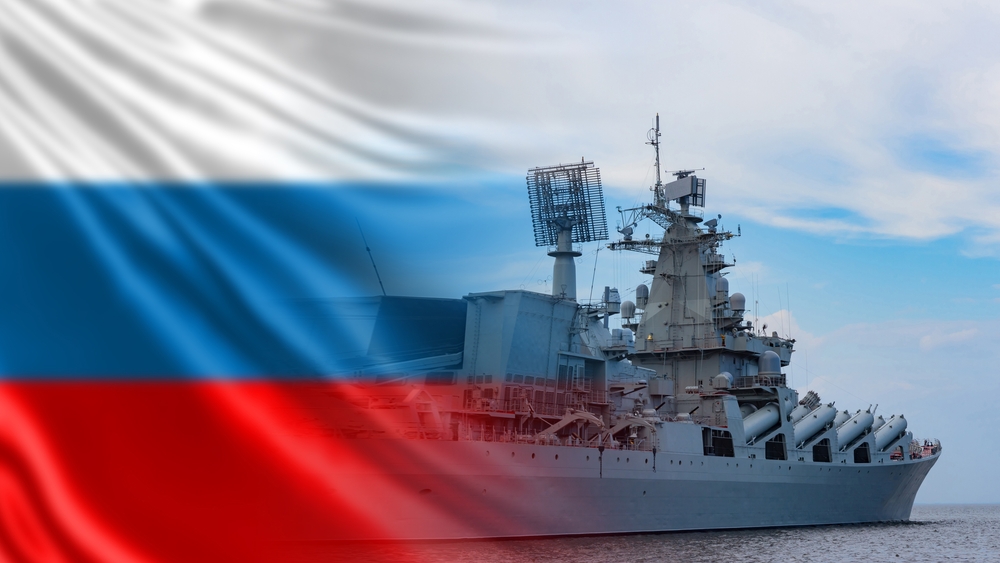Submarine Tactics and Missile Usage
Others are reading now
In an interview with RBC Ukraine, Dmitry Pletenchuk, the spokesperson for the Ukrainian Navy, discussed the recent movements and strategies of Russian naval forces in the Black Sea.
Russian Control in the Black Sea
According to Pletenchuk, since the onset of the full-scale invasion by Russia, over 25,000 square kilometers of territory have been liberated by the Ukrainian Navy and other security forces.
This includes the northern, western, southwestern, and now central parts of the Black Sea, which are essentially free from the presence of Russian surface ships.
Despite this significant progress, two critical points were highlighted:
Also read
First, Russia has shifted its naval presence to submarines, with four currently in the Azov-Black Sea region, three of which are equipped with cruise missiles. One submarine, however, appears to be out of commission due to technical issues.
Second, the northern part of the Black Sea is too shallow for these submarines to operate effectively, preventing them from approaching the Ukrainian coastline unnoticed. Consequently, the Russian Navy has adopted a strategy of hiding in bases in Novorossiysk and Sevastopol, with several ships recently relocated to the Azov Sea for training purposes.
Submarine Tactics and Missile Usage
Pletenchuk explained that Russian submarines have adopted a rotational deployment in the Black Sea, with one submarine typically on patrol at a time. This method has been ongoing for several weeks. For instance, the B-871 Alrosa, not equipped with missiles, was replaced by a Project 636 Varshavyanka submarine, which recently attempted an unsuccessful missile strike on the Mykolaiv region.
Interestingly, the relocation of Russian ships to the Azov Sea likely serves a dual purpose: training and perceived safety. The narrow Kerch Strait, fortified with barges and barriers, provides a sense of security against drone attacks. Additionally, Russian military vessels often hide among civilian ships to avoid detection and potential strikes.
Pletenchuk noted that the effectiveness of the Kalibr missiles, used by the Russian Navy, has diminished over time. These missiles are now primarily deployed during combined attacks to overwhelm Ukrainian air defenses. He suggested that technical issues and challenges in reloading missiles in Novorossiysk might have contributed to the reduced use of Kalibr missiles recently.
Grain Corridor and Maritime Safety
The Ukrainian Navy plays a crucial role in ensuring the safe passage of ships through the grain corridor, which remains functional despite the lapse of a multilateral agreement involving Russia. Most of the corridor now traverses territorial waters of NATO member states such as Romania, Bulgaria, and Turkey, providing a legal and physical shield against Russian interference.
Pletenchuk explained that while Russia occasionally attempts to disrupt the corridor through missile strikes and mine-laying, the majority of these efforts have been thwarted by Ukrainian air defenses. The Ukrainian Navy conducts regular patrols, mine-clearance operations, and anti-sabotage activities to maintain the safety and security of this vital maritime route.
In the past, Russia exploited international maritime law to declare sections of the open sea as closed for military exercises, effectively blocking the direct route from the Bosphorus to Ukrainian ports. This tactic, coupled with the presence of Russian naval patrols, significantly hampered civilian shipping.
However, the current strategy involves navigating through NATO territorial waters, which Russia dares not violate due to the risk of direct confrontation. This shift has allowed the continuation of grain exports from Ukrainian ports, bypassing Russian blockades and maintaining a lifeline for Ukraine’s agricultural economy.


